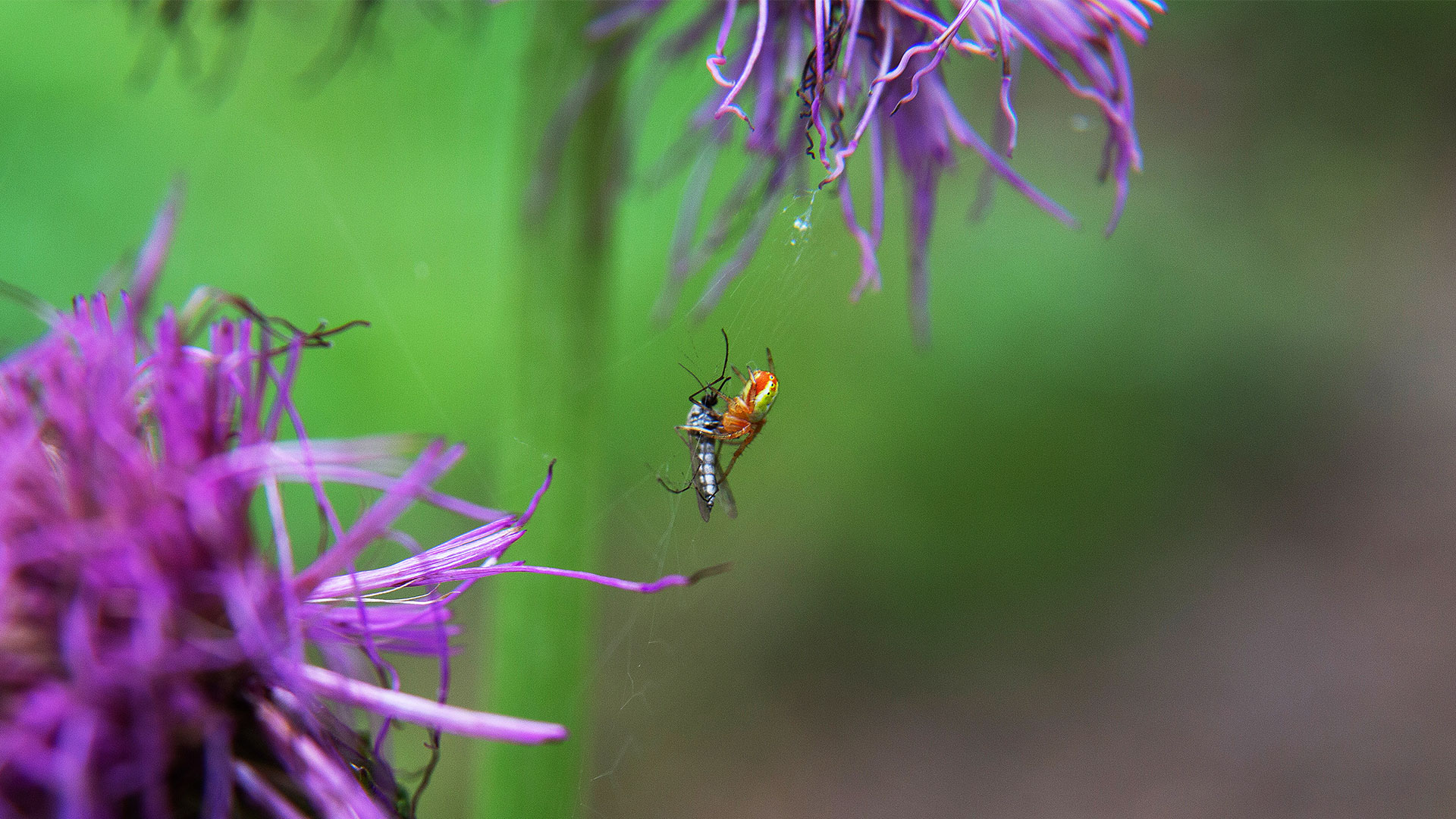As we enter Harviala forest, 100 km north of the Finnish capital of Helsinki, the earthy scent of the previous day’s rain fills the air. A layer of clouds forms a canopy over the trees, filtering gentle streams of sunlight. It’s quiet as Sara Turunen, a member of the nature team at the forest management company Tapio and an expert with the Forest Pollen (Pölymetsä) project, guides us forward.
At first glance we are alone, but upon closer inspection the forest exudes activity in the form of thousands and thousands of tiny but vital insects crawling everywhere. There are also butterflies, spiders and the first bumblebees fly by, which are the most important pollinators in the forest. The soil is also teeming with life, with more than 900 species of beetles found in Harviala.

It is estimated that there are around 24,000 insect species in Finland. Around 4,000 of these are flies of different species, each of which plays an important role both as dispersers and pollinators.
Towards science-based targets for nature
How does sustainable forestry enhance biodiversity?
Insects play an essential role in forest ecosystems, food chains and biodiversity. Looking after their well-being is working for the forests. Turunen says that if pollinators, for example, were to disappear, there would be no flowering plants at all, and there would be far fewer berries, if any. In turn, decaying plants and trees help the soil and the forest to do better. “For all insects, decaying wood is not only a nesting place but also a food source for certain larvae,” she adds.
The pollinators are at the heart of the Forest Pollen project. They thrive in forests with a wide range of tree ages and diversity, and with suitable forest gaps. Forests that are popular with pollinators and other insects have a variety of hardwood trees, which is why Turunen recommends leaving thinnings and end-cuts on the forest floor in the form of cover. Reserve trees can be allowed to mature, die and, over time, turn into decaying wood.

The six-spotted orbweaver (Araniella displicata) preys on a mosquito. Insects play a role in the forest as dispersers and pollinators, but they also feed birds and other insects. The loss of insect species also affects the living conditions of birds in forests.
Decaying wood as an indicator of biodiversity
Our operations are widely dependent on biodiversity
“It’s also a good idea to leave the trimmed treetops in place as groundwood,” Turunen explains.
A thriving insect population and measures to promote forest well-being are not only commonplace in Harviala, but also in other UPM forests. The farms follow a biodiversity programme and forest health is regularly monitored. One of the key objectives is to double the amount of broadleaved trees growing in the company’s own forests.
Promoting forest biodiversity is not only important for nature, but it also helps forests adapt to a changing climate – and tiny insects are a big help.
Forest Action – Even the smallest can change the world
Protecting biodiversity on UPM’s eucalyptus plantations in Uruguay
